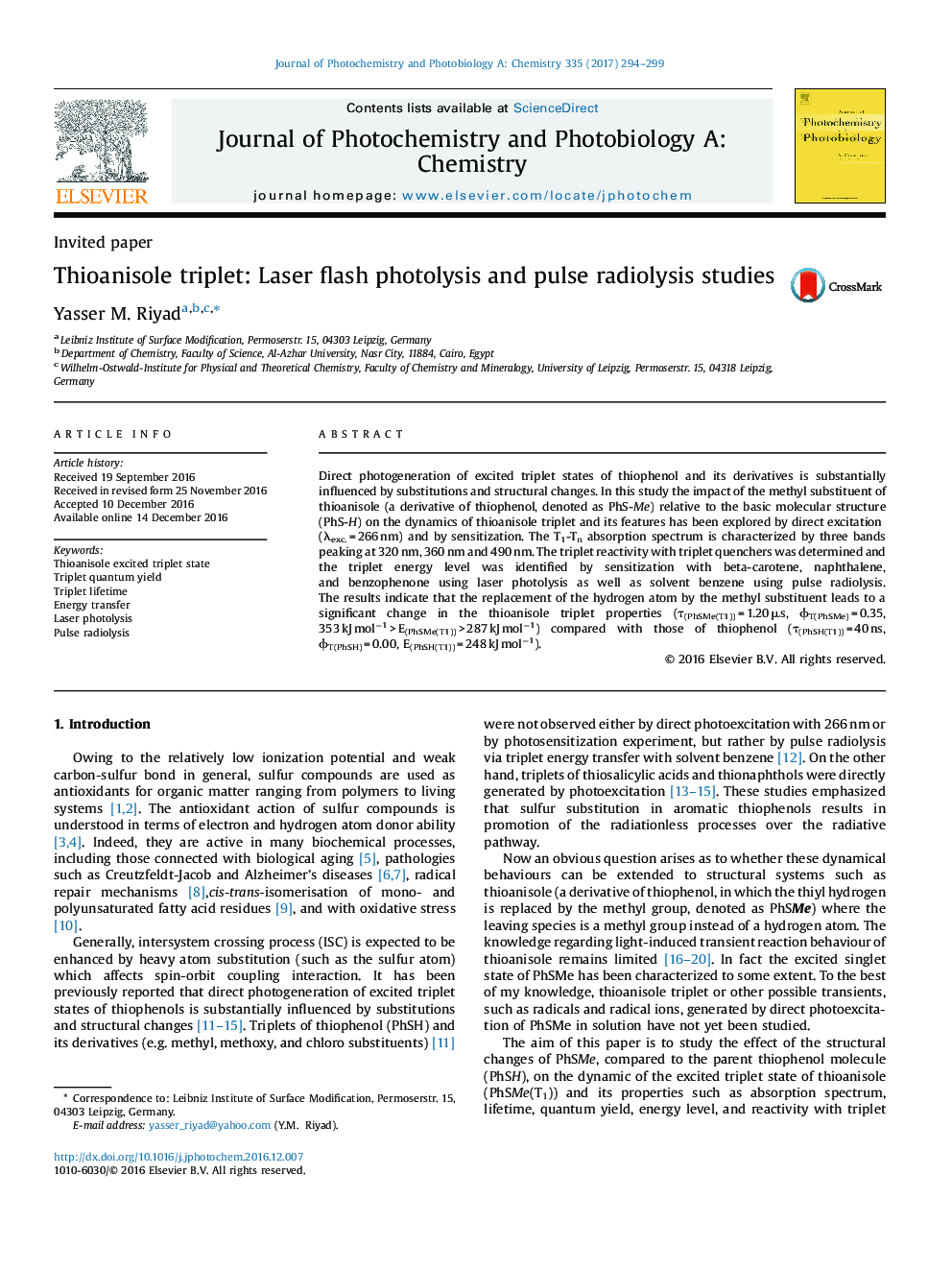| Article ID | Journal | Published Year | Pages | File Type |
|---|---|---|---|---|
| 4754143 | Journal of Photochemistry and Photobiology A: Chemistry | 2017 | 6 Pages |
â¢Photoexcitation of thioanisole by 266 nm leads to the generation of short-lived triplet (1.20 μs) and long-lived phenylthiyl radicals (ÏR â¥Â 15 μs).â¢The T1-Tn absorption spectrum of thioanisole is characterized by three bands peaking at 320 nm, 360 nm and 490 nm.â¢Other triplet parameters are: quantum yield = 0.35 and 353 kJ molâ1 > EPhSMe(T1) > 287 kJ molâ1.â¢The sulfur-centered radicals occurs via the SâMe bond fission of the PhSMe(S1).
Direct photogeneration of excited triplet states of thiophenol and its derivatives is substantially influenced by substitutions and structural changes. In this study the impact of the methyl substituent of thioanisole (a derivative of thiophenol, denoted as PhS-Me) relative to the basic molecular structure (PhS-H) on the dynamics of thioanisole triplet and its features has been explored by direct excitation (λexc. = 266 nm) and by sensitization. The T1-Tn absorption spectrum is characterized by three bands peaking at 320 nm, 360 nm and 490 nm. The triplet reactivity with triplet quenchers was determined and the triplet energy level was identified by sensitization with beta-carotene, naphthalene, and benzophenone using laser photolysis as well as solvent benzene using pulse radiolysis. The results indicate that the replacement of the hydrogen atom by the methyl substituent leads to a significant change in the thioanisole triplet properties (Ï(PhSMe(T1)) = 1.20 μs, ÏT(PhSMe) = 0.35, 353 kJ molâ1 > E(PhSMe(T1)) > 287 kJ molâ1) compared with those of thiophenol (Ï(PhSH(T1)) = 40 ns, ÏT(PhSH) = 0.00, E(PhSH(T1)) = 248 kJ molâ1).
Graphical abstractDownload high-res image (152KB)Download full-size image
